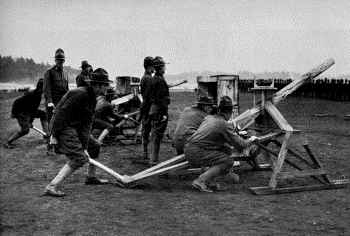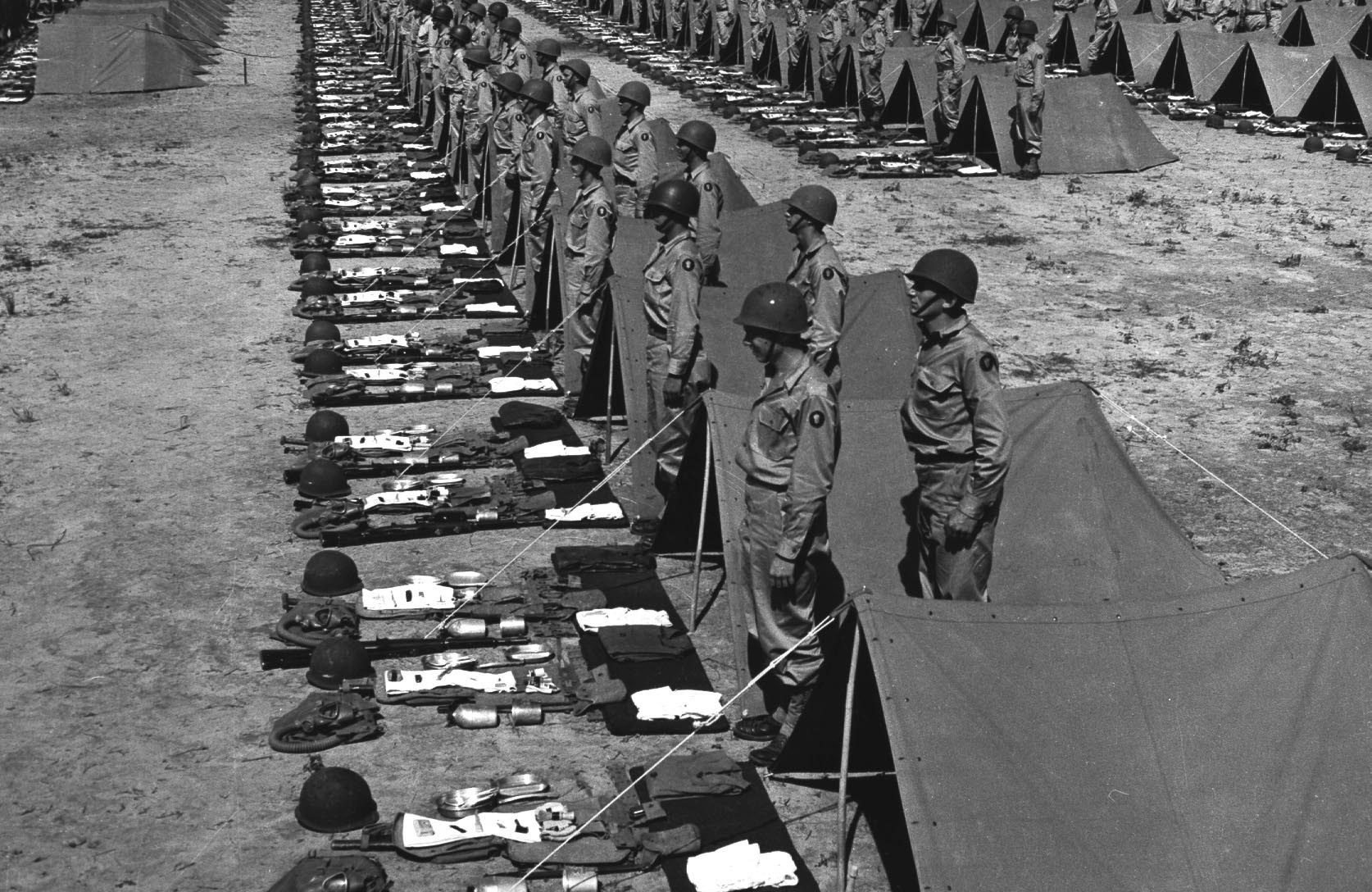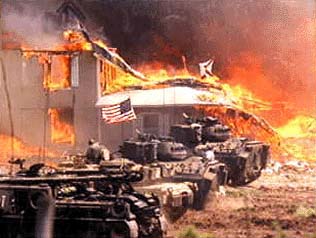The Dick Act of 1903
Heavy lobbying by The National Guard organization for a greater federal role in supplying the militia, combined with the difficulties in organizing and equipping the volunteer regiments led to the passage of the Dick Act in 1903. This Act reorganized the militia into the National Guard of the United States and the unorganized militia. The same basic division exists today into what the founders of the US would term a select militia (Reserve and Guard) and the general militia (all other male citizens capable of bearing arms). National Guard units were required to organize themselves along the same table of organization as regular army units, and Guard officers would have to meet federal guidelines and approval.
This act fundamentally changed three things in the state militias in (1) specifying organized militia unit type and organization with a federal army designation (2) requiring federal approval of organized militia officer appointments, and (3) retaining federal ownership of all military equipment provided to the organized militia (National Guard and Army Reserve). Thus, the increased federal funding led to the loss of state control over the militia as a fighting force.
World War I
 When the US mobilized the organized militia for the first World War, not all of the units had been organized into the National Guard. In order to create the National Guard divisions as specified in the force structure (the 26th to 50th divisions), existing militia units were broken up to form the type and number of units needed to fill the divisions. This created bitter feelings in the National Guard Association, after the effort spent to get the National Guard created and equipped via federal recognition.
When the US mobilized the organized militia for the first World War, not all of the units had been organized into the National Guard. In order to create the National Guard divisions as specified in the force structure (the 26th to 50th divisions), existing militia units were broken up to form the type and number of units needed to fill the divisions. This created bitter feelings in the National Guard Association, after the effort spent to get the National Guard created and equipped via federal recognition.
In the seeming normal confusion as part of the US mobilizing for war, Teddy Roosevelt lobbied Congress for permission ot organize 4 volunteer divisions. His request was turned down, in favor of having the regular army doing the organinzing. No private effort to organize a military unit has since been recognized by the US government or a state. The militia tradition that had existed since 1636 had ended.
World War II
 The hard feelings resulting from the way the call up of the National Guard in World War I was conducted, led Congress to modify the law to require the Army only to mobilize complete units and not be allowed to break up Guard units as replacement personnel, but maintain unit integrity. Thus, the 1940 mobilization took on a different character than the call up of 1917.
The hard feelings resulting from the way the call up of the National Guard in World War I was conducted, led Congress to modify the law to require the Army only to mobilize complete units and not be allowed to break up Guard units as replacement personnel, but maintain unit integrity. Thus, the 1940 mobilization took on a different character than the call up of 1917.
As the National Guard units were mobilized and deployed, the states discovered that the Dick Act had left the states without any military forces of their own to control for the needs of state and local security or the ability to to have an effective civil defense program. The various Defense Acts had funded the National Guard to the exclusion of the State militias, and the efforts of states to rebuild their militias, now typically named State Guards, depended on state funds and individual initiative, for uniforms and weapons. State Guardsmen had to furnish their own weapons, as federal procurement went to the active duty forces. This led to State units having a mix of 1903 Springfields, 1896 Krags, and civil arms, as the NFA had made it too expensive for the average citizen to own machine guns and other heavy weapons with which the State Guard organizations could have been equipped.
Korean War
As there were limited mobilizations of the National Guard, the State organizations started to wither away. Some states kept their State Guards as a cadre formation as a deep reserve.
Cold War Period
In the 1950s and 1960s, there were limited mobilizations of Guard units, promarily in order to be able to strengthen US commitments to NATO. By the 1970s, Guard service had become the preferred method of avoiding being drafted for active service, and the quality of reserve units declined. During the Reagan years, there was increased funding and a determination to rebuild reserve compnent capability, even to the extent of using National Guard brigades to "roundout" some active army divisions.
The 1980s also marked an interest in other military preparations as well. State Guards found a new mission as State civil defense organizations and formation within the state guards some units designated an military police for additional security forces.
Not every state decided to have a state guard organization, and some states objected to the use of their National Guard organizations by the federal governemnt without state approval. The issue went to the Supreme Court, were the ruling was that the National Guard is not a state militia, but "dual status" of federal and state, with state missions and orders permissible when the unit is not needed for federal service. Therefore, the first efforts took place to create military units not under peacetime control of the federal governemnt were undertaken in order to give the state an additional option.
Post Cold War
 Post 1991, active and reserve forces were eliminated from the force structure as a cost savings of the "peace dividend". There was a percentage of the citizenry opposed to this reduction in military capability, as the trained pesoneel had no placing in the reserve, as those units were also being eliminated from the force structure.
Post 1991, active and reserve forces were eliminated from the force structure as a cost savings of the "peace dividend". There was a percentage of the citizenry opposed to this reduction in military capability, as the trained pesoneel had no placing in the reserve, as those units were also being eliminated from the force structure.
Another trend started in the 1990s leading to loss in the confidence of the citizens in the actions of the federal government, in which the lives of citizens have been lost under questionable circumstances. Polls have shown over time that some 60% or more of the citizens have lost confidence that the actions of certain federal agencies are justified, and oversight is lacking. Thus, some citizens started to avail themselves of original structures of the US Constitution as the ultimate authority for the protection of the rights of citizens.